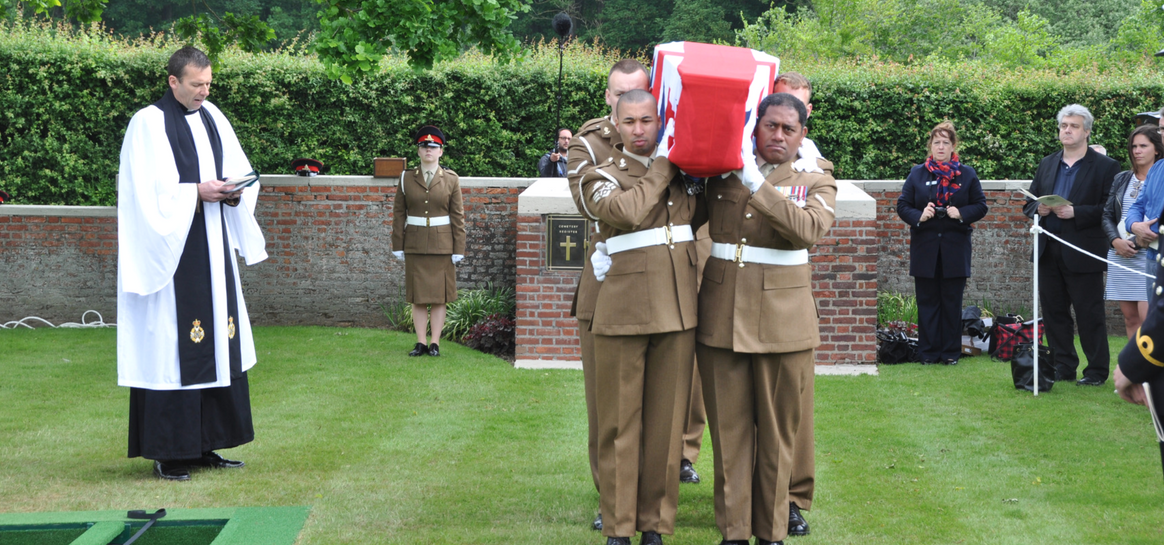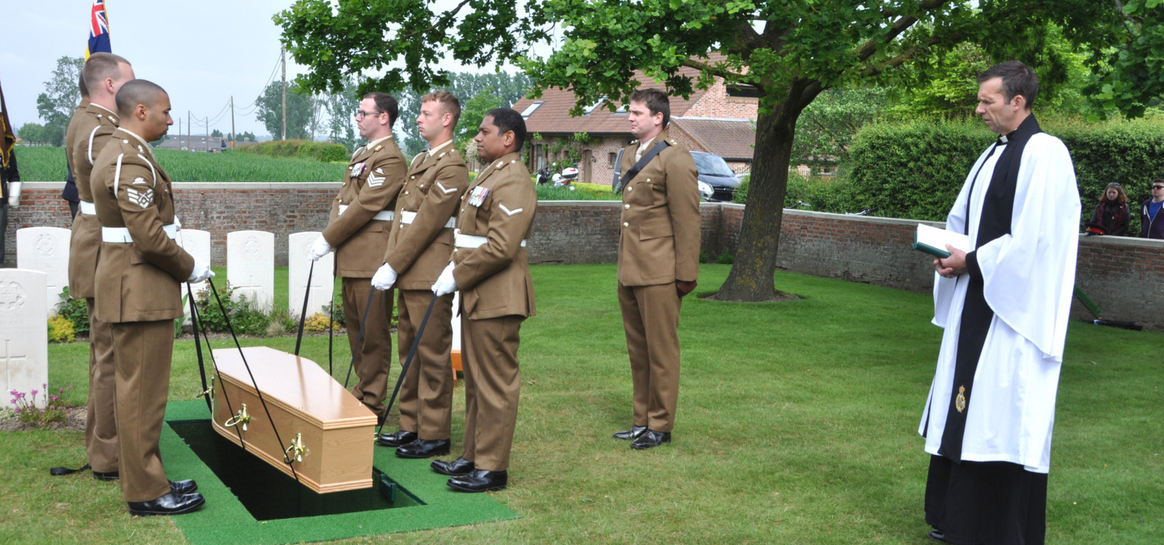16 May 2018
First World War soldier missing for over a century laid to rest

A burial service was today held for a First World War soldier whose body was found more than a century after he was killed on the first day of the Battle of Messines.
The moving service for Second Lieutenant Eric Henderson, of the 8th Battalion, London Regiment (Post Office Rifles), at CWGC Oak Dump Cemetery, Belgium, was attended by members of his family including his three great nieces.
Judith Leyman, Eric's great niece, said on behalf of the family: "Being here in Ypres, and knowing Eric's resting place, means an awful lot to us. He wasn't a dusty memory in our family, but part of our mental landscape.”
The Commission provided the headstone, which was engraved with his name and the personal inscription: “Tread softly o’er my beautiful Eric’s grave for a mother’s love lies here”.
Eric was killed on 7 June 1917, aged 21, near the village of Messines in West Flanders, Belgium. His remains were found more than a century later during road works in the area of Eekhofstraat in Belgium. He was found with several artefacts, which confirmed his identity, including a silver coin that was engraved with ‘2nd Lt. Eric Henderson, London Regiment’.
Mel Donnelly, CWGC Commemorations Manager, said: “For almost a century, 2nd Lieutenant Eric Henderson was remembered with honour on the CWGC’s Ypres (Menin Gate) Memorial to the Missing – one of tens of thousands of young men whom the fortune of war denied a known grave. When the memorial was unveiled in 1927, the assembled mourners were told ‘He is not missing. He is here’. Today, thanks to the efforts of many, that statement has new meaning for Eric and his family.”
Eric was born on 10 November 1895 in Heckmondwike, Yorkshire, the son of Rev. Joseph Graham and Emily Alice. He had a brother, Charles and a sister, Elsie, and surviving letters show the strong family ties that existed in his family.

Both Eric and his brother served during the First World War. Eric initially joined the 28th Battalion London Regiment in July 1915 as a Private. He was soon commissioned as a Second Lieutenant and joined the 8th Battalion London Regiment, also known as the Post Office Rifles.
The objectives of the Post Office Rifles on the first day of the Battle of Messines were to capture portions of four lines as well as a formidable strongpoint known as the ‘Dammstrasse’. Many of the causalities of the Battalion were due to machine-gun fire from the White Chateau, one of the objectives of the 7th Battalion. Some of the 1/8th took part in the attack, and assisted in its capture.
Eric’s brother, Charles, survived the war and it is his grand-daughters that attended the ceremony. Sub Lieutenant Harry Lewis from the British Embassy in The Hague was also in attendance, as well as current members of the Royal Artillery who paid their own tribute by providing the bearer and firing party.
The service was organised by the MOD’s Joint Casualty and Compassionate Centre (JCCC), and conducted by the Reverend Thomas Hiney CF, Chaplain to the 19 Royal Artillery Regiment.

